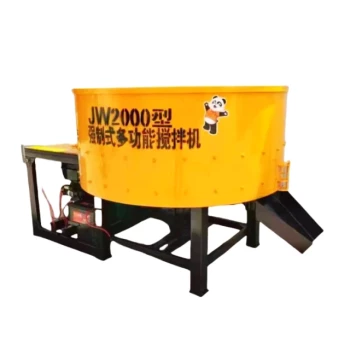Concrete mixer trucks serve as a critical link in the construction supply chain, ensuring that freshly mixed concrete is delivered efficiently and remains workable until placement. Their primary role is to transport large volumes of concrete while continuously mixing it to prevent premature setting, maintaining consistency and quality. This process supports timely construction workflows, from foundations to high-rise buildings, by eliminating the need for on-site mixing and reducing material waste.
Key Points Explained:
-
Transportation of Concrete
- These trucks carry pre-mixed or dry ingredients to construction sites, enabling centralized batching plants to supply multiple projects.
- Capacity ranges from 3 to 12 cubic yards, balancing payload limits with maneuverability.
-
Continuous Mixing Function
- The rotating drum prevents segregation of aggregates and cement, ensuring homogeneity.
- Mixing during transit maintains the concrete’s plasticity, critical for proper pouring and curing.
-
Extended Workability
- Drum rotation slows hydration, giving workers a 1.5- to 2-hour window (depending on additives) to place the concrete before initial setting.
- This is especially vital for remote sites or complex pours where delays are unavoidable.
-
Integration with Batching Plants
- (concrete machine)[/topic/concrete-machine] systems often include mixer trucks as part of automated batching and dispatch workflows.
- Sensors in modern trucks monitor slump and temperature, relaying data to plants for quality control.
-
Versatility in Construction
- Supports diverse projects: roads, bridges, residential builds, and prefabrication facilities.
- Some models offer rear-discharge or front-loading configurations for specialized applications.
By combining logistics with real-time mixing, these trucks optimize both material performance and labor efficiency—foundational to modern construction timelines.
Summary Table:
| Key Function | Description |
|---|---|
| Transportation | Delivers pre-mixed or dry concrete to sites, with capacities from 3–12 cubic yards. |
| Continuous Mixing | Rotating drum prevents segregation, maintaining homogeneity during transit. |
| Extended Workability | Slows hydration, providing a 1.5–2 hour window for placement. |
| Batching Plant Integration | Syncs with automated systems; sensors monitor slump/temperature for quality. |
| Versatility | Supports roads, bridges, residential builds, and prefabrication. |
Optimize your construction workflow with GARLWAY’s reliable concrete solutions! Our mixer trucks and batching plants are engineered for durability, efficiency, and seamless integration into your projects. Contact us today to discuss customized equipment for your needs—whether you’re a contractor, builder, or large-scale developer. Let’s build smarter together!
Related Products
- Construction Products Concrete Plant Machine Mixing Concrete Mixer
- JDC350 Small Cement Concrete Mortar Mixer
- HZS90 Large Multiquip Concrete Mixers for Construction
- JW1000 Mobile Cement Mixer Concrete Mixer Truck and Batching Plant
- Auto Concrete Cement Mixer Machine New
People Also Ask
- What are the factors influencing choice of a concrete mixing plant? Key Considerations for Optimal Performance
- Is there a difference between a concrete mixer and a mortar mixer? Key Differences Explained
- Can a concrete mixer be used for mortar? Key Considerations for Optimal Mixing
- How to choose the right concrete mix? Key Factors for Strength & Durability
- What are the 4 classifications of concrete mix? Essential Guide for Construction Pros

















